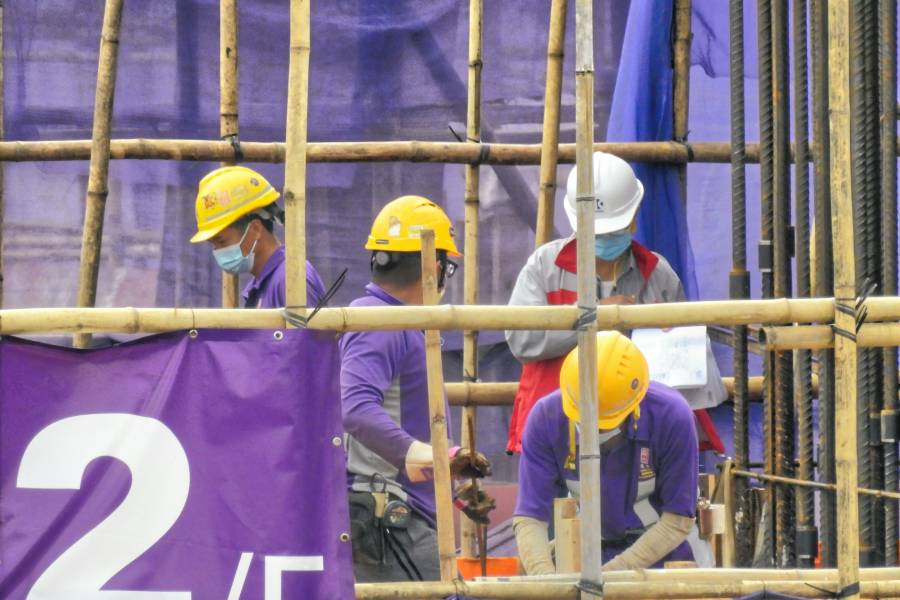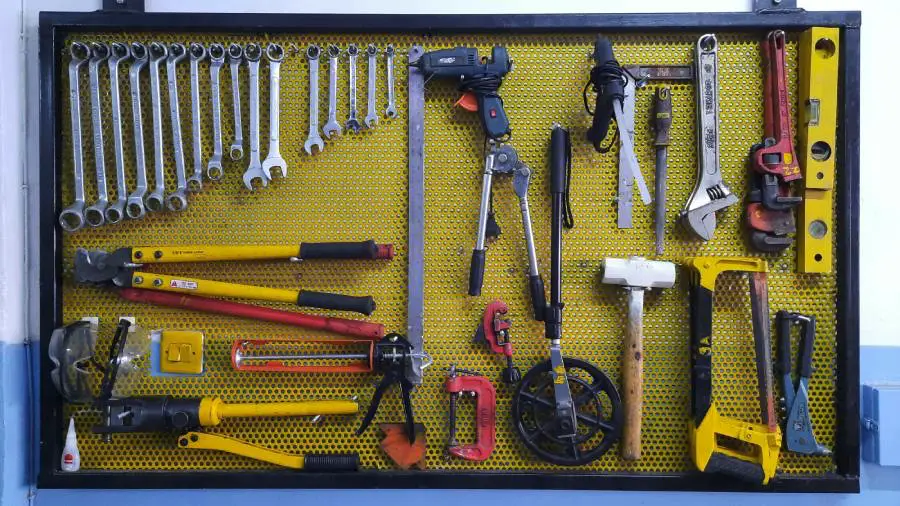Civil engineers are the reason we have roads, bridges, tunnels, dams, and safe buildings that last for generations. But behind every successful structure is a toolkit, filled with both physical instruments and digital technologies, that enables engineers to bring ideas to life with precision, safety, and efficiency.
So, what tools do civil engineers use? In this guide, we are breaking them down by category. Whether you’re a student, professional, or just curious, you’ll discover how engineers combine old-school methods with cutting-edge software to shape the world around us.

What Tools Do Civil Engineers Use?
Measuring and Surveying Tools
Every civil engineering project, no matter how big or small, starts with understanding the land. Before pouring concrete or drawing up final plans, engineers need to know what they’re working with.
The tools for measuring and surveying help capture accurate distances, elevations, and site conditions, which form the backbone of every smart design. Let’s walk through the essential equipment civil engineers use during the first phase.
Total Station
If you’ve ever driven past a construction site and seen someone peering through a tripod-mounted scope, they were probably using a total station. This device combines distance and angle measurements to help engineers map out the land with impressive accuracy.
It’s especially useful for laying out roads, marking property lines, and setting reference points before excavation begins. In modern surveying, total stations are practically a must-have.
Theodolite
Theodolites have been around for decades, but they’re still heavily used, especially when engineers need to measure angles with pinpoint precision. Whether you’re aligning the pillars of a bridge or plotting a tunnel path, this tool helps keep everything perfectly lined up.
While many civil engineers now use total stations (which include angle functions), the theodolite remains a trusted backup or tool for specialized projects.
Laser Level
Laser levels might look simple, but they’re a game-changer for fieldwork. These tools project a perfectly straight line, horizontal or vertical, so engineers can mark out consistent elevations for foundations, pipe trenches, and grading.
In other words, laser levels help make sure everything is level and aligned from the start, which avoids headaches later.
GPS & GNSS Units
When we say GPS in civil engineering, we’re not talking about your car’s navigation system. Engineers use high-precision GNSS (Global Navigation Satellite System) units that can pinpoint a location down to a few centimeters.
These devices are essential for the basic civil engineering design process and measurements on large projects, like highway construction or land development. They’re fast, efficient, and reduce the chances of human error, especially in wide or remote areas where traditional tools fall short.
Measuring Tapes and Chains
Yes, engineers still use tape measures and chains! While advanced tools dominate large-scale projects, manual measuring tools are great for quick field checks, smaller dimensions, or confirming distances during inspections.
Sometimes the best solution is also the simplest, and a sturdy tape or chain can still get the job done.
Drones
In recent years, drones have been a game changer. With high-resolution cameras and even LiDAR sensors onboard, drones can fly over a site and produce accurate 3D maps in a fraction of the time it would take with ground-based tools.
They’re especially useful for surveying hard-to-reach areas, tracking project progress, or generating terrain models before grading begins. Plus, drone data can be fed directly into civil engineering design software for smoother planning workflows.

Design and Drafting Tools
Once the site is surveyed and the terrain mapped out, civil engineers shift gears into design mode. This is where creativity meets calculation and where design software becomes an engineer’s best friend.
AutoCAD
If there’s one tool every civil engineer learns early on, it’s AutoCAD. This software is the go-to for creating 2D and 3D blueprints, everything from road layouts to drainage systems.
It’s fast, flexible, and compatible with just about everything else. Whether you’re sketching a new intersection or finalizing site elevations, AutoCAD helps get it done with precision.
Civil 3D
AutoCAD is great, but Civil 3D is better when it comes to infrastructure. It’s specifically built for civil engineering, with tools for terrain modeling, road alignments, stormwater networks, and more.
If you’re designing a subdivision or highway system, Civil 3D keeps things organized and responsive to changes in elevation, grading, or surface materials.
Revit and BIM
Revit brings Building Information Modeling (BIM) into the mix. It’s a 3D modeling tool that integrates architecture, structure, and MEP (mechanical, electrical, and plumbing) systems into one collaborative environment.
This means fewer surprises during construction, and more accurate project timelines and budgets.
What Software Do Civil Engineers Use?
It’s not just about one program. Most engineers juggle multiple tools:
- AutoCAD or Civil 3D for drafting
- STAAD.Pro, ETABS, or SAFE for structural analysis
- Primavera P6 or Microsoft Project for scheduling
- GIS platforms for mapping
- Excel for calculations and reports
No matter the task, having the right software means better designs, fewer delays, and smoother collaboration.
Soil Testing Tools
A solid foundation starts with solid ground. That’s why civil engineers need to know exactly what lies beneath the surface before construction begins.
Soil testing tools give engineers the insight they need to determine how strong, stable, and safe the ground is.
Proctor Test Tools
The Proctor compaction test helps engineers figure out the ideal moisture level for compacting soil. Get this wrong, and the ground could settle, crack, or fail. Get it right, and you’ve got a sturdy base for roads, buildings, and sidewalks.
Construction Tools
With plans in hand and the soil tested, it’s time to build. Civil engineers rely on a wide range of construction tools to turn designs into physical structures safely and efficiently.
Some tools are high-tech, others are heavy-duty. But each one plays a part in moving a project from paper to pavement.
Concrete Mixers and Vibrators
You can’t build much without concrete. Mixers ensure consistent quality, while vibrators remove air pockets for a stronger finish. It’s the little things that make a big difference in structural durability.
Rebar Tools
Reinforced concrete is only as strong as its rebar. Engineers use benders and cutters to shape steel bars exactly as the blueprint requires. It’s precision work that helps prevent cracks and collapses.
Excavators, Rollers, and Bulldozers
From digging foundations to leveling ground, heavy machinery is essential. Engineers oversee these machines to make sure work is done safely, efficiently, and to spec.
Marking Tools, Tripods, and Levels
During construction, engineers constantly check alignments, elevations, and layout points. Tripods and laser levels keep everything aligned. Marking tools keep crews on the same page.
Safety Equipment
Construction sites are full of moving parts, quite literally. There are machines, materials, and teams all working at once. And with that comes risk.
PPE
You’ve probably seen the basics: hard hats, reflective vests, steel-toe boots, and safety glasses. But for engineers, this isn’t just gear but a part of the daily uniform.
It ensures they’re visible, protected, and prepared for whatever the job site throws at them.
Harnesses
If you’re working on a bridge deck or perched on scaffolding, one thing stands between you and a serious accident is a harness.
In civil engineering, working at heights is just part of the job. But that doesn’t mean it should ever be taken lightly. Harnesses let engineers and crew members move confidently in elevated work zones, knowing they are protected if something goes wrong. You might not notice a good safety harness when its job, but it’s quietly saving lives every day.
Everyday Protection
Job sites aren’t exactly quiet or clean. Between the concrete dust, roaring machinery, and chemical fumes, engineers are constantly exposed to health risks that sneak up over time.
That’s why the smart ones never show up without the basics: a dust mask or respirator, and a good pair of earplugs. These small tools make a big difference in the long run, helping civil engineers stay sharp, alert, and healthy year after year.
Safety Goes Digital
Gone are the days of paper clipboards and lost safety forms. Today’s civil engineers use mobile apps to perform safety inspections, track PPE usage, and instantly report hazards. It’s all done in real time, with a few taps on a phone or tablet.
Digital tools don’t just make safety more efficient; they make it proactive. You catch risks earlier, respond faster, and keep everyone on the same page without the paperwork pileup.
Environmental Monitoring Tools
Every project, whether it’s a highway or a housing development, comes with a footprint. That’s why engineers use environmental monitoring tools to track how their work affects air, water, and soil around the site.
Air Quality Monitors
Air quality monitors catch dust and pollutant levels before they get out of hand, especially important near schools or neighborhoods. Water testing kits help make sure storm runoff doesn’t contaminate nearby lakes or streams. Even sound level meters play a role, keeping noise within acceptable limits and helping avoid unhappy neighbors (and costly fines).
And with portable weather stations onsite, teams can monitor wind, humidity, and temperature, all critical for pouring concrete, managing erosion, or keeping work safe during stormy days.
Structural Analysis Tools
Before a beam is bolted or a column is poured, civil engineers want to know exactly how it’s going to behave. Will it hold under the weight of heavy traffic? How will it respond to an earthquake? Will it stand the test of time?
That’s where structural analysis tools come in.
Software like STAAD.Pro, ETABS, and SAP2000 let engineers run digital simulations on their designs. They can test load scenarios, wind forces, seismic vibrations, and more before a single shovel hits the ground.
Tools like SAFE help ensure that slabs and foundations can handle both weight and pressure without shifting or cracking. And when engineers need to model complex behaviors like material fatigue or structural vibration, programs like ANSYS step in with even deeper insights.
Think of these tools as digital crash tests for structures. They help engineers build smarter, safer, and more efficiently.
Project Management Tools
Civil engineering isn’t just about design and math; it’s about coordination. A single project might involve surveyors, contractors, architects, city officials, and a dozen subcontractors. That’s a lot of moving parts, deadlines, and documents to juggle.
To keep it all flowing smoothly, civil engineers turn to project management tools.
Software like Primavera P6 and Microsoft Project helps with scheduling, resource planning, and milestone tracking. Engineers can lay out entire timelines, assign tasks, and flag risks before they derail the project.
On the ground, platforms like Procore and Bluebeam are lifesavers. They combine everything from drawings to RFIs, daily logs to budget tracking, in one connected space. So whether you’re in the office or out on the job site, you’re always up to speed.
And for day-to-day communication and quick task coordination, tools like Asana, Trello, or Slack help small teams stay aligned and accountable.

Conclusion
So, what tools do civil engineers use?
As you’ve seen, the answer isn’t just a list of gadgets or software. It’s a toolkit built on precision, practicality, and progress. From handheld GPS devices to powerful simulation programs, every tool has a purpose.
Civil engineers measure land with drones, shape blueprints with AutoCAD, analyze soil before the first dig, and ensure that every slab and beam is structurally sound before it’s ever built. They manage teams, juggle deadlines, and make sure every project respects not just the budget, but the environment and public safety too.
At the end of the day, civil engineering isn’t just about what we build. It’s about how we build it, who we build it for, and the legacy we leave behind
